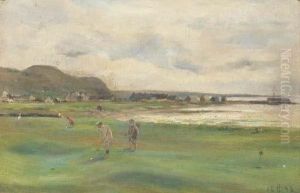John Cuthbertson Paintings
John Cuthbertson was a British-born instrument maker and scientist known for his work in the 18th and early 19th centuries. Born in 1743 in Cumberland, England, he became an apprentice to a scientific instrument maker in London, where he learned the trade of crafting precision instruments such as barometers, compasses, and electrical machines.
Cuthbertson's reputation grew as a skilled craftsman, and his instruments were known for their quality and accuracy. In the late 1760s, he decided to move to Amsterdam, Netherlands, where he established his own workshop. His move to Amsterdam was likely influenced by the city's status as a hub of scientific inquiry and trade at the time. This period was marked by significant interest in the physical sciences and an increased demand for scientific instruments to conduct experiments and explorations.
Throughout his career, Cuthbertson was deeply involved in the scientific community. He collaborated with many scientists and contributed to various experiments, especially in the field of electricity. His electrical machines were particularly renowned and were used by notable scientists of the time, including Martinus van Marum, who used them for various experiments at the Teylers Museum in Haarlem, Netherlands.
Cuthbertson's work was instrumental in the advancement of experimental physics, particularly in the study of electricity. He improved the design of Leyden jars (an early form of capacitor) and electrostatic generators, and his contributions to the field were recognized by his peers and in scientific literature.
Despite his significance during his lifetime, Cuthbertson did not leave a vast amount of written records, and thus, much of what is known about him comes from the instruments he created and the accounts of his contemporaries. After a long career, John Cuthbertson died in 1821. His legacy lives on through his instruments, some of which are preserved in museums, and his influence on the development of scientific equipment.
